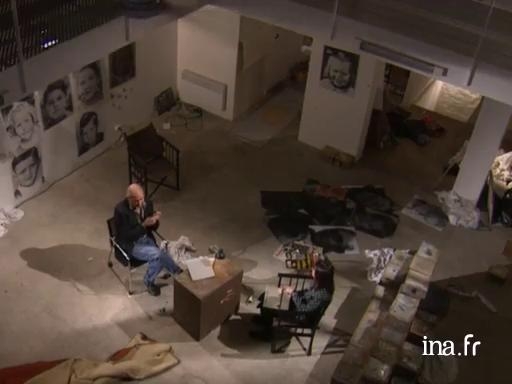Christian Boltanski
I work on things that everybody knows.
I think that in art, one must never discover but instead recognize, and so I work on things that are extremely simple and not at all intellectual.
And in fact, when someone dies and another does not, and these are the things that everyone asks as questions.
So it is not, the work of the artist, it is perhaps to simply underline a given moment, in a slightly more emphasized fashion, a question so that people ask themselves that question a little more profoundly.
I think that in reality, that we can only talk of what the other knows, that is, if I say to you: I have a terrible headache
You can only understand what that is because you have had a terrible headache, and naturally your headache does not resemble mine.
But there is something that is between us, that makes it so that if I say: I have a headache, you will understand.
And if we can read Proust today, it is because we recognize ourselves in each page, because we have all been jealous, because we have all been alone in a room, waiting for our mother,
Laure Adler
Especially you, for the mother.
Christian Boltanski
We always say ourselves, it is always, ah yes, that's me, he is talking about me, and in fact I think that when one is an artist, we send out a sort of stimulus.
And then it is always he who looks at the work, who creates the work, and who creates it using his own past.
If I show a picture of a child running on the beach, for one person that will be a picture of their brother, for another, their nephew.
The beach will be that of Dinant, or Berck, so it is always the person who looks at the work that creates the work.
And there was something that pleased me, like that, I exhibited in Japan, and I knew very little about Japanese culture, and the Japanese told me: your art if so Japanese and you resemble a Japanese, you must have a Japanese grandfather.
And I was really happy because I told myself: if I exhibit my work in Africa, the Africans will tell me: your art is so African, in any case that would be the dream, you resemble an African.
And so it is always the spectator looking at the artwork who creates the work, he does it everything he knows and completely reconstructs it.
When I was younger, I had an idea which is a little romantic and which is in any case very Christian, which was that the artist was someone who held a mirror in front of his own face and that each person who looked into it recognized themselves, and final
There is a story, I think, by Bradbury, which is pretty, where a couple have lost a child.
And then they go for a walk and they find their child, who was dead, and then they find him so they are very very happy.
And then one day they go to town with this child, and all of a sudden, someone cries out: Father! You died 6 months ago.
And then a woman says: my husband! He died 3 months ago.
And in fact it is a Martian, and this child has no face, his face is simply the desire of others.
And when one is an artist, it is a bit like that, we are no longer anything and we are only the self of others.





